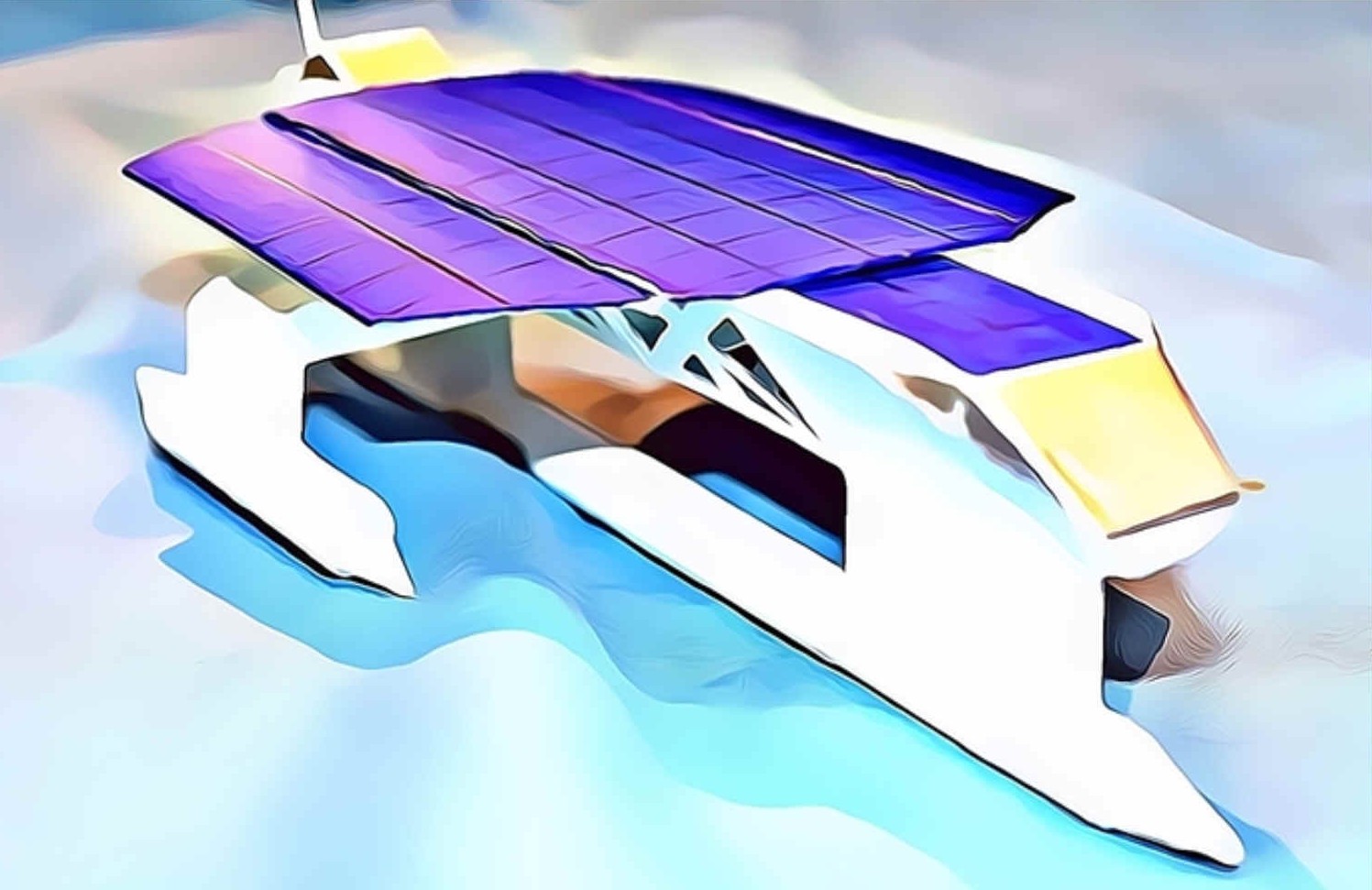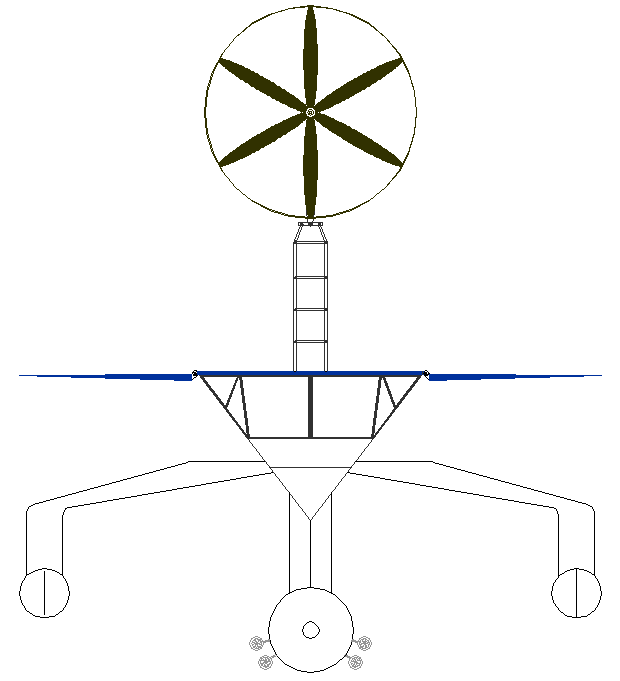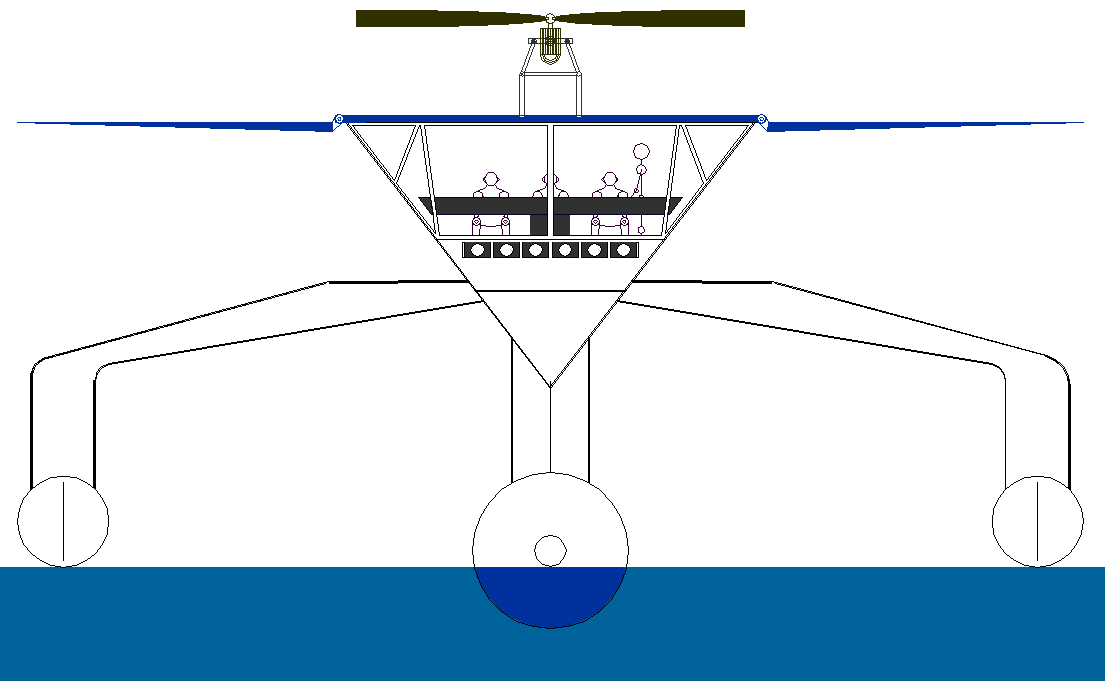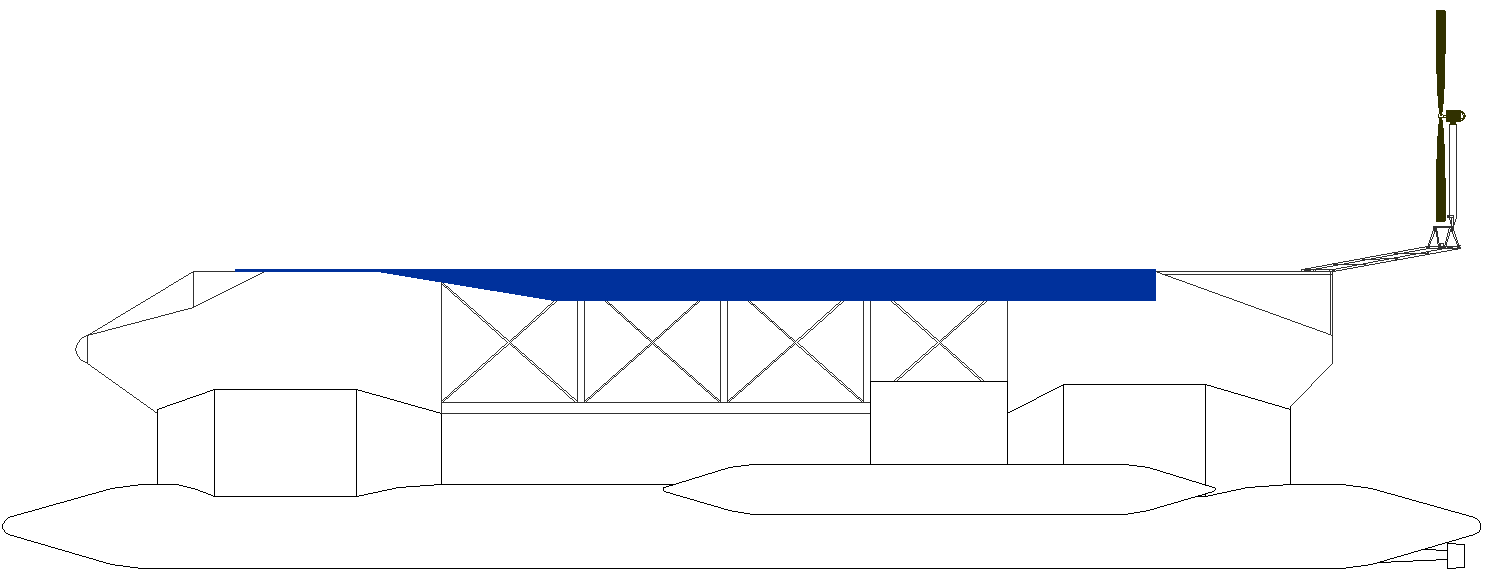|
ROTARY SAIL WINDGENS
Please use our A-Z INDEX to navigate this site or return HOME
|
ORIGINAL INNOVATION - It all started with this tiny 1:200 scale model, made of paper and cardboard. It floated perfectly as a submerged central hull, with outriggers just skimming the water surface, to provide stability.
In the years that followed a swing wing system and wind turbine boom were developed on a land vehicle. The idea is to combine a rotary sail generator with solar panels to allow faster blue water transits, allied to advanced computer navigation for green lane operation.
Where the JVH2 is concerned, we'd not be fielding a vessel with wind turbine generators, where the additional complexity competing with hull mass, may be a hindrance to attaining the under 80 days world record.
That does not mean the concept will not be part of an experimental and educational follow on after the World Hydrogen Challenge, the Formula 1 of ocean powerboating.
WINDGENS
Most ships have a hull into and onto which, engines, crew and cargo space are fitted, with no thought for harvesting energy from nature. Whereas the sailing ships of old were designed to carry as much sail area as they could - and this was the main consideration in any ship design. Hence, the Swann is more aligned with the tall ships, than the bunker fuelled smoke belchers of today, in the search for sustainable navigation.
If we are to beat the present water speed record for solar powered vessels, we need to improve on the power to weight ratio and the energy harvesting capacity in relation to swept turbine area, working in concert with our solar wings. How do we do that?
Having designed the mountings for our wind turbine mast, into our superstructure, we need to arrange the geometry of the hydraulically operated mast so that a rotary generator might be presented to the wind to maximise the harvesting time, commensurate with safe operation in variable weather conditions.
There are two choices of wind turbine to seek to optimize alongside solar arrays: HAWT or VAWT. This page looks at Horizontal Axis machines, that were generally considered to be more efficient than Vertical Axis generators. Hence, a good point to start. And there are a lot of advantages. Mostly simplicity and reliability. But they are harder to service and raise the center of roll of the vessel a little.
MAST LOWERED - In this CAD diagram we see the mast lowered, but with the wind turbine generator working as a rotary sail. The solar paneled swing-wings are a high stress item requiring careful design, and aircraft quality manufacturing, they can revolve to face the sun - called tracking. The wind turbine may be furled to present horizontal to the sea, for storms. See below.
MAST RAISED - The same line drawing as above with the mast raised and the solar wings in the horizontal position. This height of the superstructure above seawater is greater for the semi-submerged central hull, than for the wave piercing hull design.
FURLED - The Elizabeth Swann is seen here with solar panels horizontal and the rear mounted wind turbine in the furled position where the blades are horizontal to sea level, so as to present a reduced area in storm conditions. This is the wave piercing hullform.
The Elizabeth Swann seen here with solar panels and rear mounted wind turbine in the lowered position, but not furled. This is an example of running in lively winds using solar panels almost horizontally.
FAITHFUL REPLICA - You can see from the 1:200 model, that the CAD version of the proposed design closely resembles the original concept.
Just like the tall sailing ships, we started with the solar panels and wind turbine, working our way back to the water, via an efficient hullform. Two designs were considered:
1. A single central submerged hull stabilized by outriggers - or Small Waterplane Area Triple Hull (SWATH).
2. A single central wave piercing hull stabilized by outriggers as a trimaran.
Both hull designs share the same:
a) Ultra light superstructure purposed designed to harvest energy from nature via b) and c) below,
b) Solar wings that track the sun and fold for storms, in concert with
c) A turbine generator on a mast that tracks wind conditions and furls for storms.
|
|
Please use our A-Z INDEX to navigate this site or return HOME
This website is Copyright © 2022 Jameson Hunter Ltd
|





